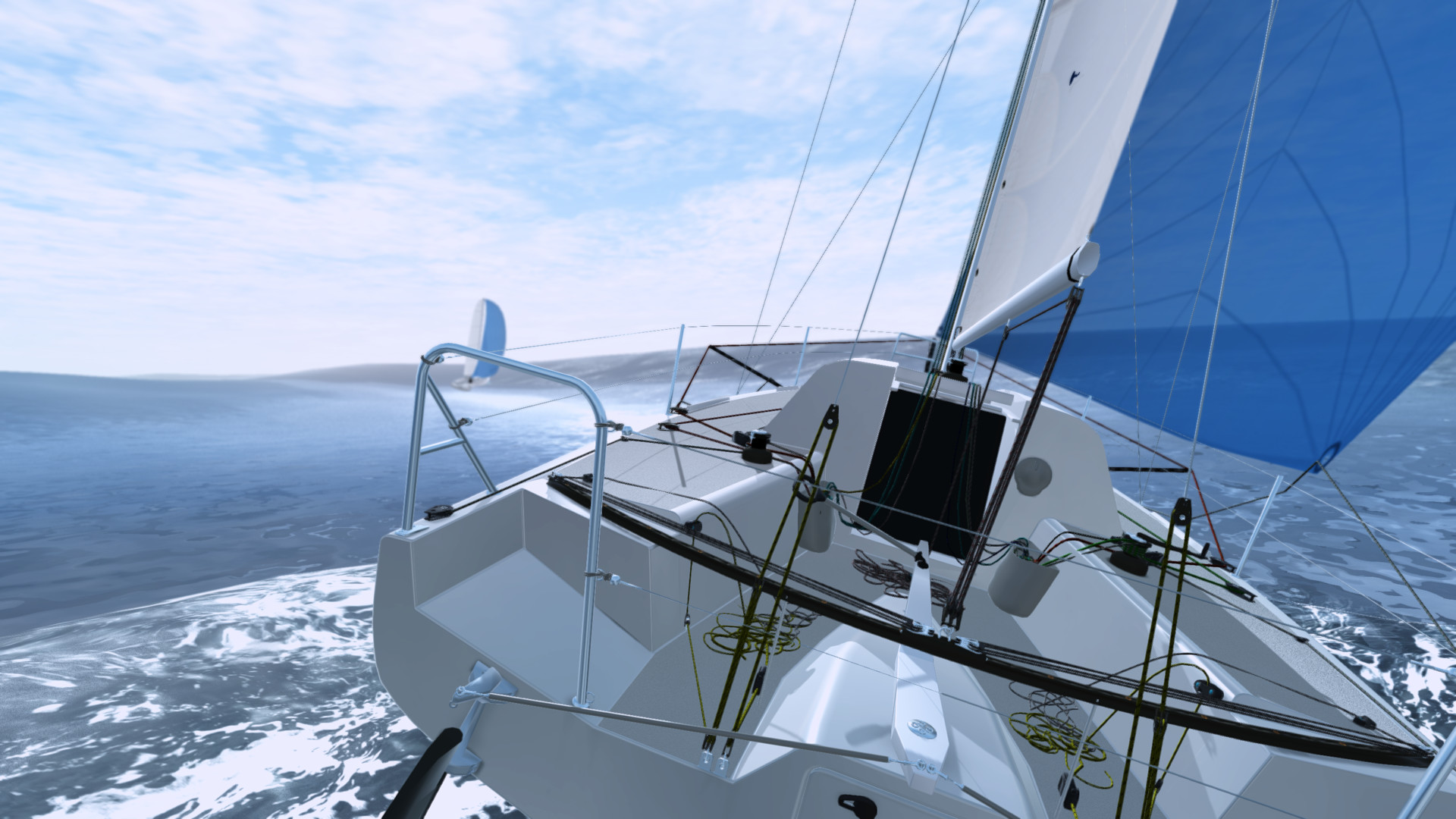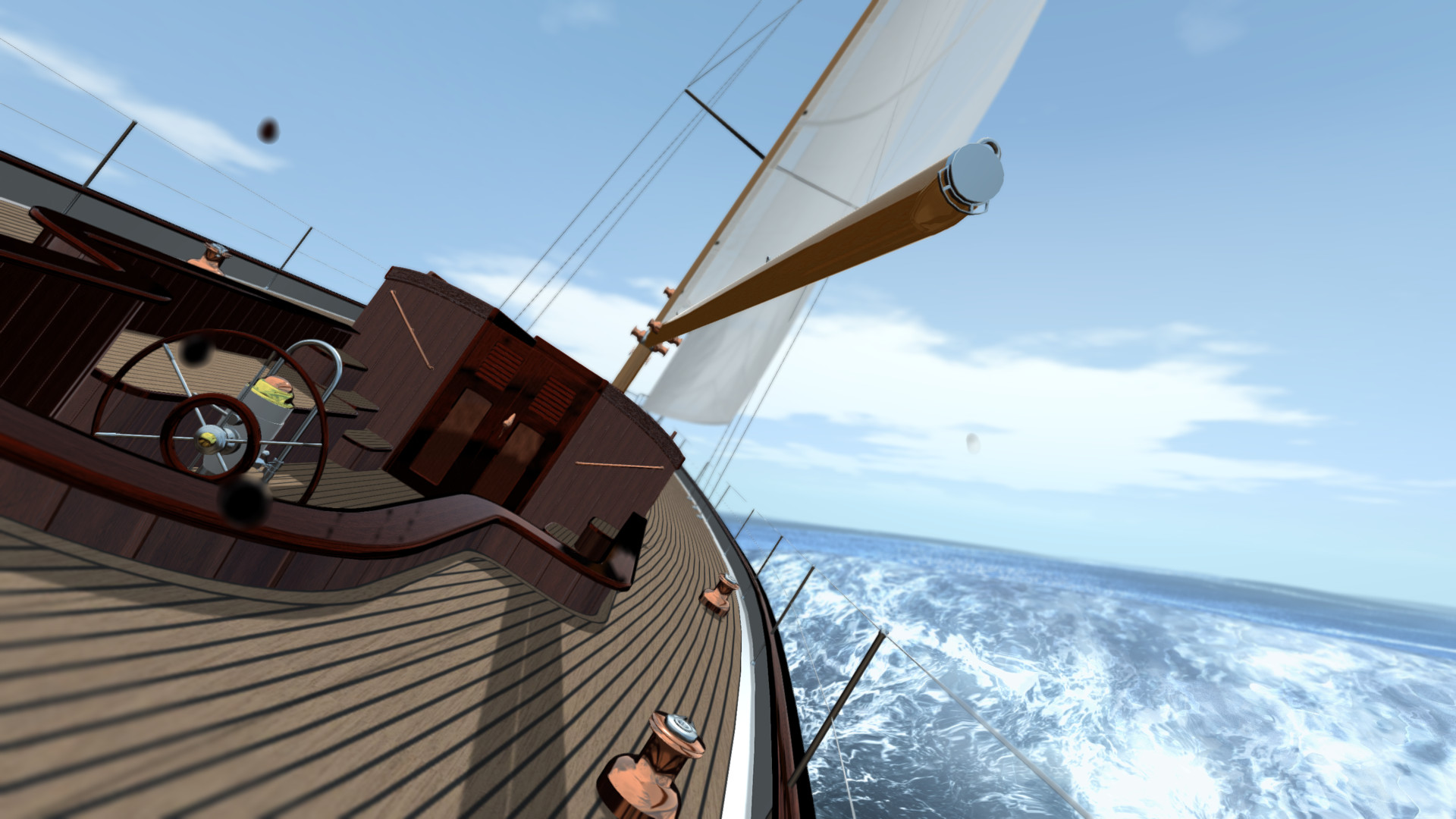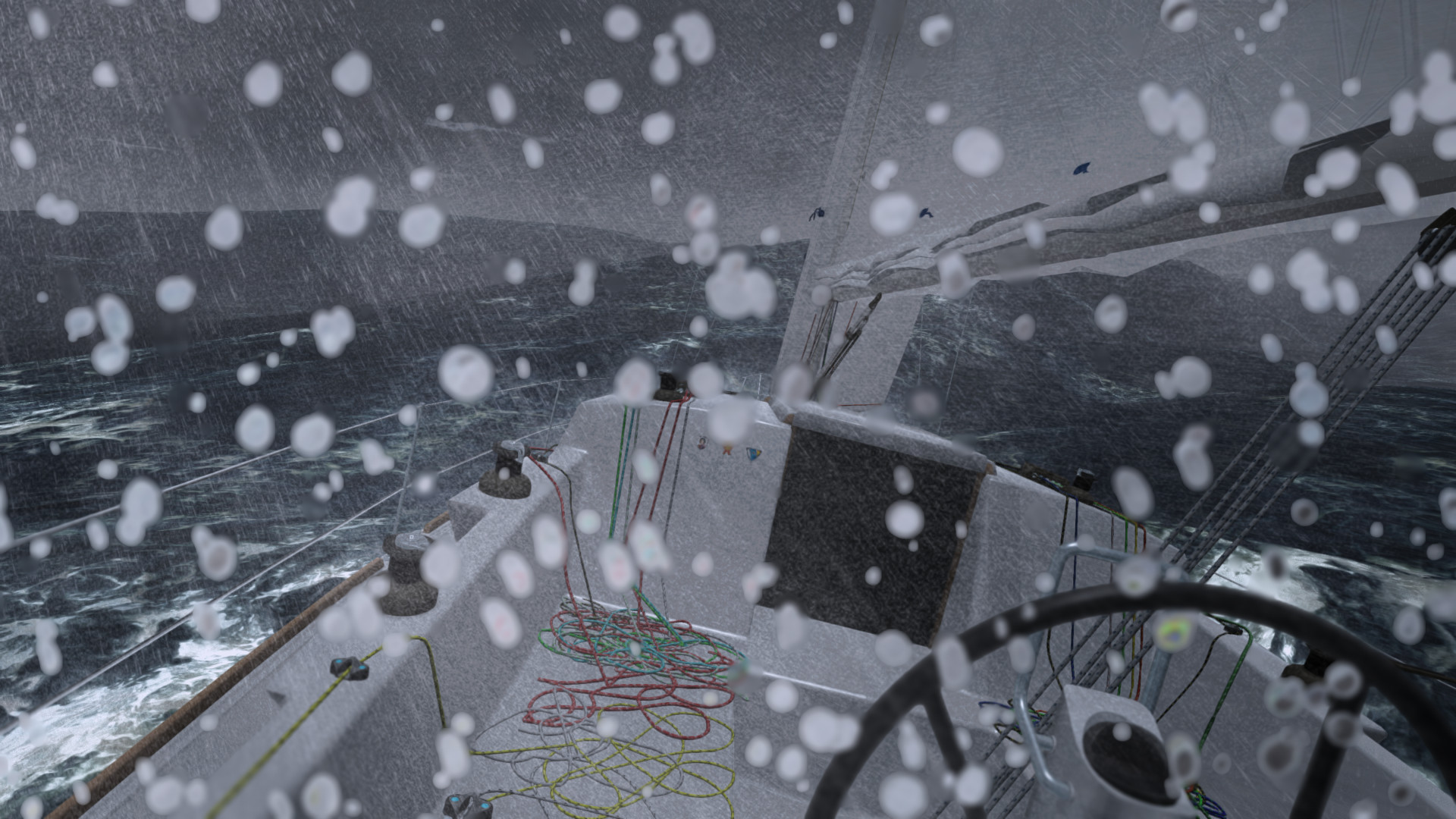Getting lost at sea in Sailaway: The Sailing Simulator
Learning the lingo and mastering elemental forces... sort of.


In Now Playing articles PC Gamer writers talk about the game currently dominating their spare time. Today, sailing can't be that hard, right?
I presumed that reading 20 books in Patrick O’Brian’s Aubrey-Maturin series might give me an innate understanding of sailing. I was wrong. Sailaway proves one of two things: 1) things have changed significantly in the 217 years I’ve been away, or 2) that reading historical fiction about flaxen-haired naval heroes is a poor foundation for learning. Perhaps both.
My journey starts well enough. I understand that sailing into the wind requires me to tack, and some of the terminology sounds familiar—backstays, jibs, the sea, etc. But as I progress through the tutorial, I get the sense that instead of being a natural Jack Tar in the mould of Jack Aubrey, I’m more like Stephen Maturin, the physician-cum-spy from O’Brian’s books who’s famously terrible at sailing. By the time I get to the tutorial about different lines, I’m lost at sea. They all sound like they’re named after school bullies from Just William. Didn’t Cunningham and Vang lock poor Archie in the pantry? Mayday.
Despite this, I’m enjoying how complicated it is. Most ships in games control like bumper cars, sliding in whichever direction you press, but Sailaway is honest. You won’t go anywhere without the right knowledge. I might not know my genoas from my spankers, but with time and patience I could learn something. Sadly, I have neither, so I turn on Sailaway’s buffoon mode, which handles all the difficult stuff while I concentrate on steering. Wrapped in my buoyancy aid of ineptitude, I decide to try some challenges. What could go wrong? I can’t capsize. At least, I don’t think I can.

The first challenge is about tacking, which is something I’ve read about and conceptually understand. It’s the process of zigzagging into the wind so you can move forward even when it’s blowing in the wrong direction. I’d explain exactly how that works, but I respect you too much. When it works, I feel magnificent; I’m controlling nature, harnessing reckless forces like a cowboy breaking a wild stallion. I’m the master of gusts; the baron of breezes. I’m feeling good about myself until I realise my goal isn’t getting any closer. This is because I’m moving at about six knots—roughly the same speed as a raft made of corpses.
I reach the goal eventually, and I’m filled with a sense of false confidence. I’m taking the next step. In the following challenge, I’m controlling how taught the sails are. It feels amazing when they’re filled with wind and angled correctly, like I’ve mastered something elemental. This lasts for a minute, before I have to change direction and I spill the wind from my sails like a feckless lubber. Spools begin unspooling. Sheets flap. With lots of guessing, I start moving again, but the message is clear. I’m not ready for the sails. I crawl over the finish line in twice the time it was meant to take me, like a wheezy boy on sports day. A horn sounds, and for the first time I’m relieved that this is a one-person boat rather than a ship of the line full of seaman looking to me for guidance.
The biggest gaming news, reviews and hardware deals
Keep up to date with the most important stories and the best deals, as picked by the PC Gamer team.

